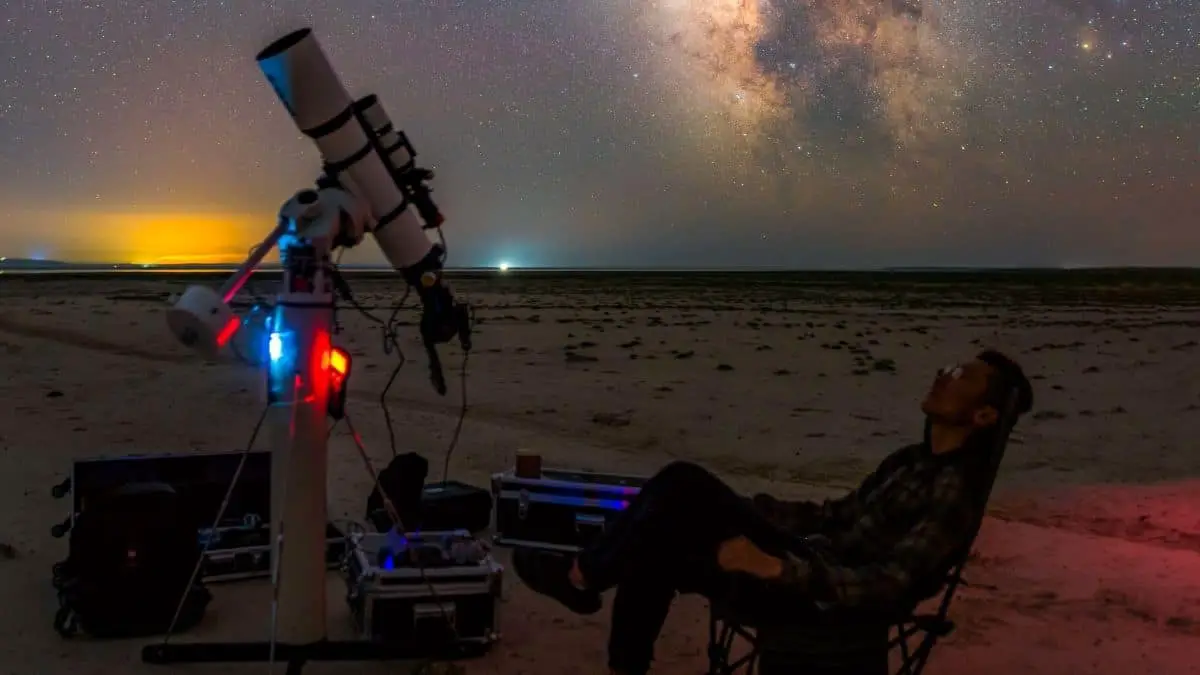
Remember that you get what you pay for. Stay away from any telescope that you can buy in a department store. Stay away from any telescope that brags about its power or magnification on the box. Either a small sky tracker for a camera and lens, or a larger equatorial mount for anything longer than about 300mm of focal length. 
Tips on Buying a Telescope For Astrophotographyįor time exposures longer than about 30 seconds with a wide-angle lens, you will need an equatorial mount.

#BEST TELESCOPE FOR ASTROPHOTOGRAPHY INSTALL#
No matter what kind of equipment you decide on, remember that you are going to have to lug it from inside to outside every time you use it, unless you install it in a permanent observatory.Ī small scope that gets used often is a better investment than a big scope that stays in the closet. Likewise, you don't want to purchase an 8 inch f/10 refractor if you have to transport it in a compact car. Obviously, you don't want to buy a very large and heavy telescope, such as a 16 inch Schmidt-Cassegrain telescope if you are going observing by yourself and it takes two people to lift it. Portability - Whether you intend to observe from your driveway, drive an hour to a reasonably dark sky site, or get on a plane and fly to a world-class dark-sky site, the size and weight of your equipment will become important. Observe or Photograph - Do you want to specialize in astrophotography and observe occasionally? Or do you want to use the scope mostly for observing, and just take a couple of snapshots once in a while? I also could shoot the Sun and Moon very well with the 5-inch. My best work for long-exposure deepsky was with a 5-inch refractor. My best work with planets was shot with an 11-inch SCT. You need a bigger scope if you want to shoot small planetary nebulae and small galaxies. You need a fast, short focal length scope for wide-field work such are large nebulae.
Deep-Sky - Star Clusters, nebulae, Galaxies. You need a large-aperture, high-quality scope with a relatively long focal length if you want to do high-resolution photography of the planets. Planets - Sun, Moon, Mars, Jupiter, Saturn etc. High-resolution planetary imaging requires different equipment and techniques compared to wide-field astrophotography. Check out these types of refractors from:Īs with picking a camera, picking the best telescope for your needs will depend on a number of different factors:ħ0mm refractor on an equatorial mounting.Įxperience Level - Are you a beginner or a seasoned expert?īudget - how much do you have to spend? Don't forget to budget for other accessories also, such as the mount and camera adapter.Īrea of Interest - Is there a particular area that you want to specialize in? There are a LOT of inexpensive, and moderately priced, small refractors. The 100mm telescope may have a focal length of anywhere from 600mm to 800mm, which is determined by its focal ratio (the focal length divided by the aperture). So a 100mm camera lens as a focal length of 100mm, but a 100mm telescope has an aperture of 100mm. Note that camera lenses are listed in terms of their focal length, but telescopes are listed in terms of their aperture (the size of the opening that gathers light). And I also own and shoot with a 65mm refractor. I have spent about 40 years photographing the wonders of the night sky with just a 5-inch refractor. While this is true, you don't really need a large telescope for astrophotography. For normal visual observing, many people say that the larger the telescope you get the better because large telescopes gather more light the better to see faint astronomical objects. 
There are lots of different telescopes that you can get. So a small refractor on a decent mount will minimize these problems. The best telescope for a beginner in astrophotography is a small refractor.īecause telescopes magnify the image, they also magnify any tracking problems.
Astro-Physics 130 GTX - 130mm aperture, 780mm focal length f/6.3 triplet apochromatic refractor - $7,000. Tele Vue NP 101is - 101mm aperture, 540mm focal length, f/5.4, Nagler-Petzval apochromatic refractor - $4,000. Astro-Physics 92mm F/6.65 Stowaway - 92mm aperture, 612mm focal length, f/6.65 triplet apochromatic refractor - $3,750. Astro-Tech AT70ED - 70mm aperture, 420mm focal length, f/6 ED doublet refractor - $300.







 0 kommentar(er)
0 kommentar(er)
